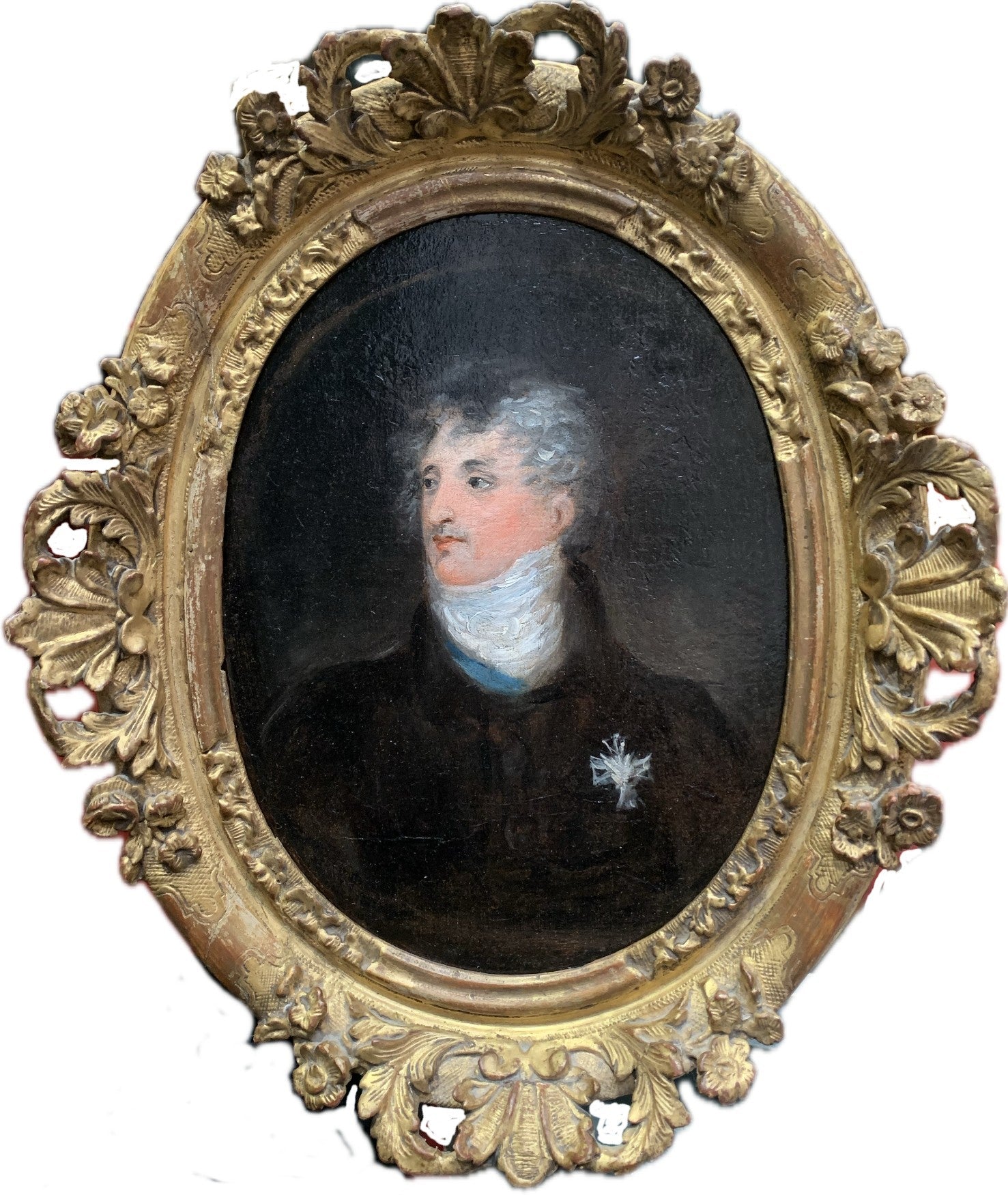

English School
Armand Emmanuel du Plessis, The 5th Duke of Richelieu
Oil on canvas
Image size: 10 x 7 1/2 inches (25.5 x 19 cm)
Contemporary gilt frame
This painting is a copy of Thomas Lawrence’s 1822 portrait of Armand Emmanuel du Plessis, Duke of Richelieu. As with the original portrait, this painting shows the Duke sporting the blue sash and medallion of the French Order of the Holy Spirit, the most prestigious chivalric order in France at the time. The viewer is just about able to make out the medallion’s dove symbol, and it is clear that the artist who copied the original portrait was dedicating his time to rendering the Duke’s face and hair. The grey curls, long nose and downturned mouth are diligent representations of Lawrence’s work, indicating the portraitist’s skill at rendering faces.
Armand Emmanuel du Plessis, Duke of Richelieu
The 5th Duke of Richelieu was born in Paris in 1766, and married Alexandrine Rosalie Sabine de Rochechouart-Faudoas at the age of fifteen. Shortly after the wedding, du Plessis embarked on a three-year Grand Tour of Italy. Upon his return, he joined Queen Marie Antoinette’s Regiment of Dragoons and joined the court of King Louis XVI, where he was in close contact with the monarch on a daily basis.
1789 is a notorious year in French history, and the du Plessis played a key role in saving the life of Marie Antoinette. Upon hearing of the March on Versailles, he disguised himself as part of the crowd and managed to reach the palace, heading straight to the Queen’s chambers and imploring her to shelter in the King’s quarters. He was then sent to Vienna to discuss the French Revolution with Marie Antoinette’s brother the Holy Roman Emperor Joseph II. Before du Plessis reached Vienna, Joseph II died and he was instead present for the coronation of the new emperor.
During this time, du Plessis rekindled his friendship with Austrian Prince Charles de Ligne and, accompanied by the Comte de Langeron, they joined the Imperial Russian Army. His service at the capture of Izmail earned him the Order of St George, the highest military decoration in Russia.
In 1791, du Plessis became the Duke of Richelieu upon the death of his father. He was summoned back to Paris but applied to be the French diplomat to Vienna. From here, du Plessis joined the counter-revolutionary Conde army. This military force suffered many defeats, but Catherine the Great offered military roles to Conde’s officers, an opportunity which du Plessis seized. He became a Major General under Catherine the Great, and was appointed as governor of Odessa under her grandson, Emperor Alexander I. Later, he became responsible for territories in Kerhson, Ekaterinoslav and Crimea, engaged in expeditions to the Caucasus, and commanded a unit in the 1806-1812 Russo-Turkish war. Under the care of du Plessis, Odessa became the third largest city in the Russian Empire - the people of Odessa erected a bronze monument of the Duke of Richelieu in 1828.
Du Plessis returned to France in 1814, but this was short lived as he soon returned to Vienna to rejoin the Russian Army and foster a relationship between the new King Louis XVIII and Alexander I. In 1815, he was appointed the Primer Minister of France, despite his royalist views, and held this position - as well as that of the Minister of Foreign Affairs - until the end of 1818. Du Plessis died of a stroke in 1822.
We would like to thank Adam Busiakiewicz for his help in identifying the sitter as the Duke of Richelieu.

